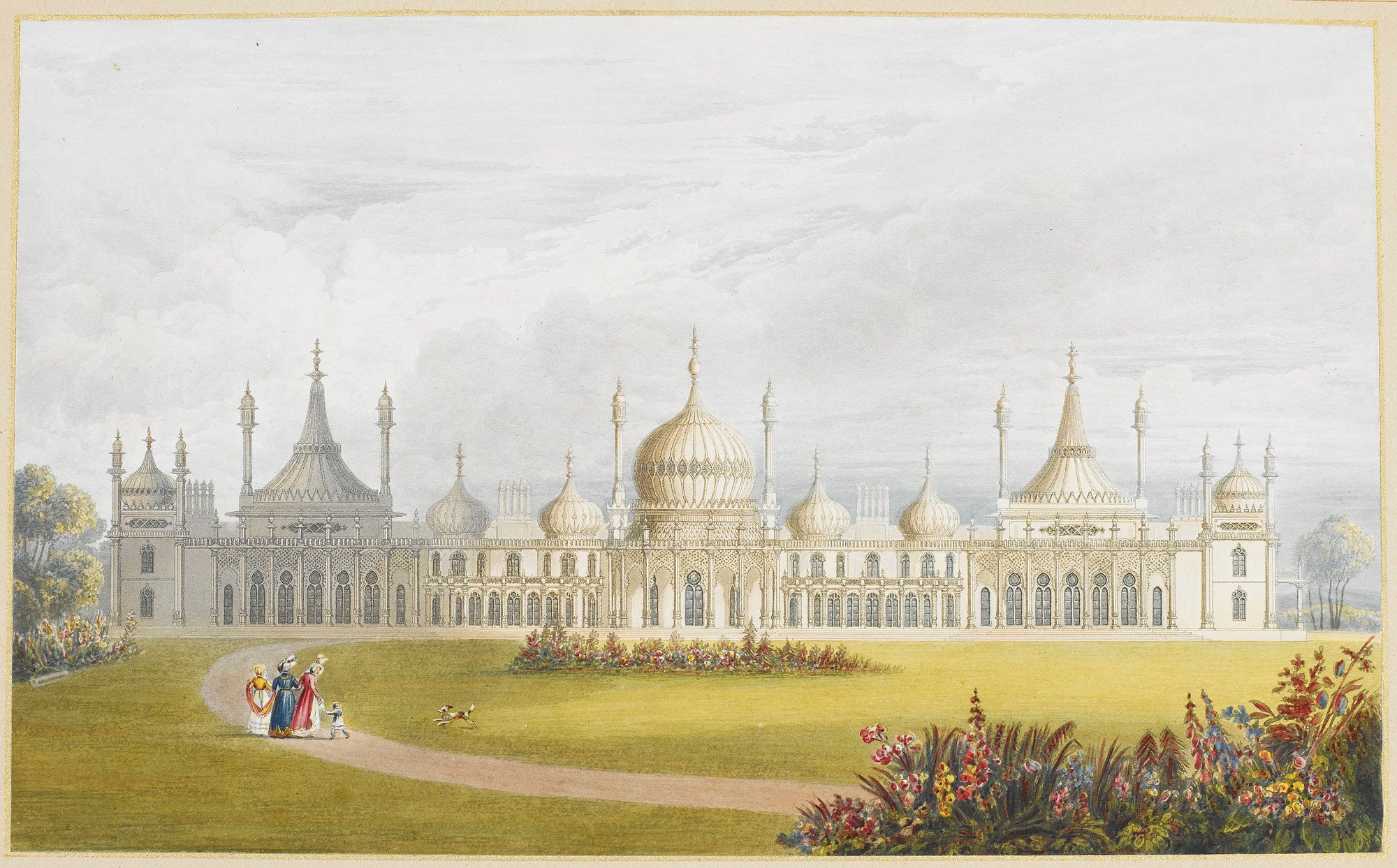Brighton Pavilion: The Making of a Pleasure Palace
Exotic domes and minarets only hint at the splendours inside

The Royal Pavilion at Brighton is a remarkable testament to the wide-ranging decorative tastes of George IV (1762–1830), when Prince Regent (1811–20). The exotic domes and minarets hint at the splendours that lie inside. Using inventory lists, drawings by the architect John Nash (1752–1835) and the designs of Frederick Crace (1779–1859) and Robert Jones (1815–23) we can begin to piece together an image of this royal retreat.
George IV first visited Brighton in 1783 at the age of 21. He had experienced an attack of gout and had been advised to take in the sea air and water. Brighton was an obvious choice for his recuperation: from the middle years of the eighteenth century it had become a fashionable resort and the sea water was believed to have therapeutic qualities. In 1786, the prince decided to acquire a residence in Brighton. His cook Louis Weltje, consequently purchased a seaside lodging house and the surrounding land for him. To begin the process of transforming this lodging house into a princely residence, the architect Henry Holland was employed in 1787 to enlarge and extend the building in the neo-classical style. The result was the Marine Pavilion.
The prince, whose taste was in a constant state of transformation, later employed theatre designer and architect John Nash to enhance the Pavilion. These changes took place from 1815 to 1822 and the exterior was transformed by the addition of Indian-inspired domes and minarets. John Nash was inspired by Humphrey Repton's published but unexecuted designs for the Pavilion and its gardens (1808) as well as William and Thomas Daniell's four volumes entitled, Oriental Scenery.
The designers Frederick Crace and Robert Jones were employed to work on the interiors of the Pavilion. These spaces demonstrated the prince’s love of Asian art and design. This later became known as chinoiserie, a style inspired by the porcelain, silk and lacquerware imported from China, Japan and other Asian countries. Objects often had complex provenances; it was not unusual to find a French secretaire adorned with Japanese lacquer panels or an English organ within a case decorated with Chinese motifs.
During George IV’s reign, the Pavilion functioned as a place at which he could escape from London and the stiff formality of life there. At Brighton he could enjoy his favourite things: music concerts, balls and banquets. In the 15 years following his death in 1830, Brighton Pavilion was used as a residence by both William IV (1765–1837) and Queen Victoria (1819–1901). Unfortunately, the Pavilion was not to Queen Victoria's tastes. In 1846 she sold the property to the Corporation of Brighton and chose to build her main seaside retreat at Osborne House on the Isle of Wight, a site that allowed for the privacy and space she desired for her growing family. Proceeds from the sale of the Pavilion provided the funds to equip the East wing of Buckingham Palace with its façade designed by Edward Blore (1787–1879). The furnishings and fittings of the Pavilion were entirely removed and used to furnish Buckingham Palace and Windsor Castle.
Under the ownership of Brighton Council the interior of the Pavilion was refurbished. In 1864 and throughout the 1920s, Queen Victoria (1819–1901) and Queen Mary (1867–1953) returned many of the Pavilion’s original furnishings and fittings, which were incorporated into the restoration. HM The Queen has also placed a number of objects on long term loan at the Pavilion.
Today, the Pavilion is open to the public as a Regency museum, enabling visitors to experience the splendour that once was George IV’s pleasure palace. Find out more about visiting the Royal Pavilion.







